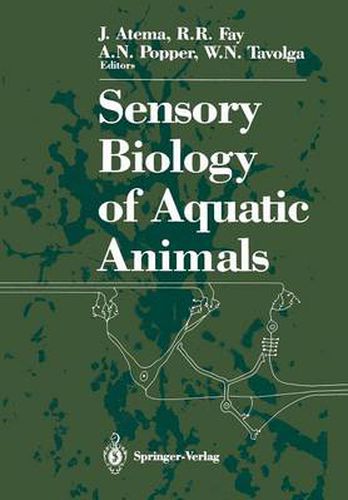Readings Newsletter
Become a Readings Member to make your shopping experience even easier.
Sign in or sign up for free!
You’re not far away from qualifying for FREE standard shipping within Australia
You’ve qualified for FREE standard shipping within Australia
The cart is loading…






This title is printed to order. This book may have been self-published. If so, we cannot guarantee the quality of the content. In the main most books will have gone through the editing process however some may not. We therefore suggest that you be aware of this before ordering this book. If in doubt check either the author or publisher’s details as we are unable to accept any returns unless they are faulty. Please contact us if you have any questions.
This volume constitutes a series of invited chapters based on presentations given at an International Conference on the Sensory Biology of Aquatic Animals held June 24-28, 1985 at the Mote Marine Laboratory in Sarasota, Florida. The immediate purpose of the conference was to spark an exchange of ideas, concepts, and techniques among investigators concerned with the different sensory modalities employed by a wide variety of animal species in extracting information from the aquatic environment. By necessity, most investigators of sensory biology are specialists in one sensory system: different stimulus modalities require different methods of stimulus control and, generally, different animal models. Yet, it is clear that all sensory systems have principles in common, such as stimulus filtering by peripheral structures, tuning of receptor cells, signal-to-noise ratios, adaption and disadaptation, and effective dynamic range. Other features, such as hormonal and efferent neural control, circadian reorganization, and receptor recycling are known in some and not in other senses. The conference afforded an increased awareness of new discoveries in other sensory systems that has effectively inspired a fresh look by the various participants at their own area of specialization to see whether or not similar principles apply. This inspiration was found not only in theoretical issues, but equally in techniques and methods of approach. The myopy of sensory specialization was broken in one unexpected way by showing limitations of individual sense organs and their integration within each organism. For instance, studying vision, one generally chooses a visual animal as a model.
$9.00 standard shipping within Australia
FREE standard shipping within Australia for orders over $100.00
Express & International shipping calculated at checkout
This title is printed to order. This book may have been self-published. If so, we cannot guarantee the quality of the content. In the main most books will have gone through the editing process however some may not. We therefore suggest that you be aware of this before ordering this book. If in doubt check either the author or publisher’s details as we are unable to accept any returns unless they are faulty. Please contact us if you have any questions.
This volume constitutes a series of invited chapters based on presentations given at an International Conference on the Sensory Biology of Aquatic Animals held June 24-28, 1985 at the Mote Marine Laboratory in Sarasota, Florida. The immediate purpose of the conference was to spark an exchange of ideas, concepts, and techniques among investigators concerned with the different sensory modalities employed by a wide variety of animal species in extracting information from the aquatic environment. By necessity, most investigators of sensory biology are specialists in one sensory system: different stimulus modalities require different methods of stimulus control and, generally, different animal models. Yet, it is clear that all sensory systems have principles in common, such as stimulus filtering by peripheral structures, tuning of receptor cells, signal-to-noise ratios, adaption and disadaptation, and effective dynamic range. Other features, such as hormonal and efferent neural control, circadian reorganization, and receptor recycling are known in some and not in other senses. The conference afforded an increased awareness of new discoveries in other sensory systems that has effectively inspired a fresh look by the various participants at their own area of specialization to see whether or not similar principles apply. This inspiration was found not only in theoretical issues, but equally in techniques and methods of approach. The myopy of sensory specialization was broken in one unexpected way by showing limitations of individual sense organs and their integration within each organism. For instance, studying vision, one generally chooses a visual animal as a model.